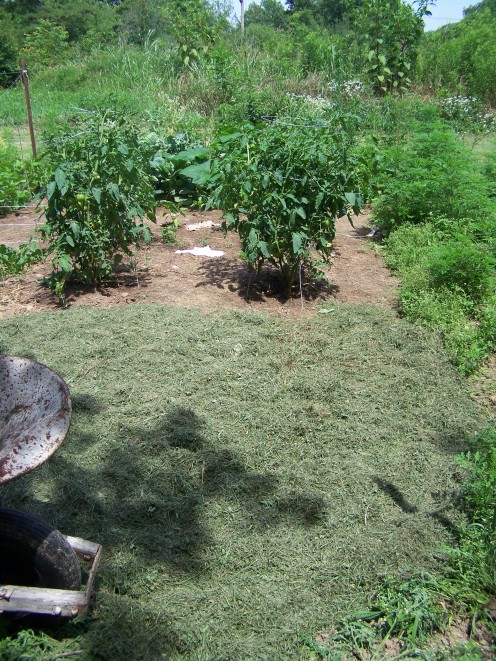Garden Plans for Spring

A few things you should do in the spring to get ready for planting your organic vegetables.
© Copyright Notice ©
My photographs are mine, taken by me, with my camera. You may use them for personal reasons (desktop backgrounds, personal websites or you can print them for personal use.)
If you choose to use them on websites I require a link back to my HubPages. You may link to my profile or to one of my Hubs.
You may not use them without my permission or for profit.
I sell my art and if you are interested in purchasing it send me a message.
ALL of my articles are MINE and you may NOT use them for anything but reading on my page.
Gardeners Have Different Needs.
Look through your gardening logs and other notes to determine anything you might have missed.
Also, do a walk-about your garden and property and take careful notes on what you see that needs to be done.
Good garden notes will keep your gardening plans running smoothly.
Have a Place ready for Winter Plant Orders.
Spring is when many winter ordered items are shipped.Make sure you have a place ready for the new arrivals. The better protection they get while out-of-ground, the better their chances of survival.
Purchase Your Organic Pesticides.
Have these purchased and ready so you are not running around later when you realize you have an infestation. Neem oil, pyrethrum spray, kaolin clay, and diatomaceous earth are good things to keep on hand in case of pest outbreak.
Purchase or Have Ready Organic Fertilizer.
You should have started your compost the year before so it is ready fr this years spring planting. If you failed to do this, go ahead and buy your compost from a dealer. Just make sure you start your own piles this year, for next spring.
Start your worm tea so that it has about a week to grow beneficial microbes. Plan this so that when the time comes to fertilize, the worm tea will be ready to use.
Prepare your Ground.
Whether you are doing raised beds or conventional gardening, get your ground ready. Remove any spring weeds and add a good layer of compost to the planting area. Now is also the time to add a few handfuls of red wigglers and some red wiggler worm castings to the fluffed soil.
Fluff your amended soil lightly with a spade or pitchfork and then rake it level. Add a thick layer of mulch to prevent more weeds from sprouting.
You can allow your chickens to scratch through the soil, before adding your red wigglers and mulch. They will pick out many pests and drop a bit of fertilizer in the area. Too much green poop may burn your plants, so be careful. Chicken tractors are helpful in this instance.
Check and Prepare Garden Equipment.
Make sure pruners, shovels and hoes are sharpened and all equipment is oiled and clean. Use a strong disinfectant on your tools to kill any possible plant pathogens.
Prepare your Seeds.
Double-check your stored seeds and replace any that have molded, gotten insects, or those that are damaged.
Repair Garden Fencing:
Replace and repair damaged fencing now, before weeds grow and hide the holes. This is one of the most effective ways to keep larger pests out of your garden. Prompt action now will prevent costly replacement fencing later in the season.
Farmer's Market Preparation.
Now is the time to put the finishing touches on your farmer's market plan. This means getting all the baskets, tables, cloths, and other items you need cleaned and painted. Finish printing out price tags and gather your merchandise bags, and other items into one area.
Do not forget to print out discount price tags for items that aren't selling quickly.
Have a place ready for produce that didn't sell, so you can put it up for your own uses.
If selling seeds or plants, make sure that you have pictures of the fruit on display. A picture is worth a thousand words, the better the image, the more likely you are to sell your seeds and young plants.








